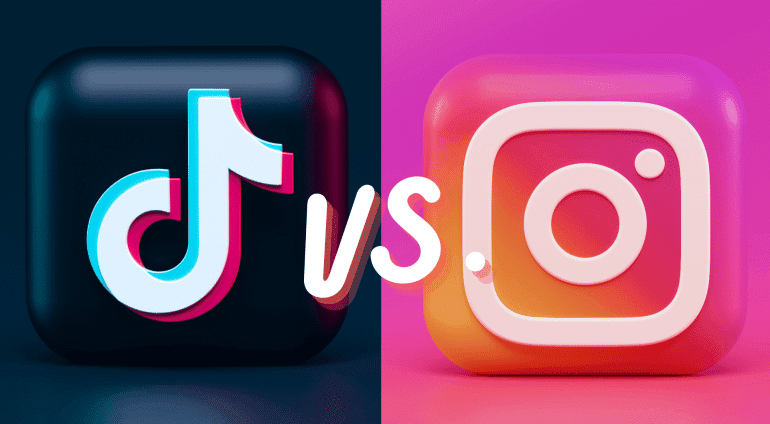It is safe to assume that social media is taking the world by a storm, and is in fact, becoming a pertinent part of our lives don’t you think? With the drastic increase since the coronavirus pandemic, over 9 in 10 individuals use social media each month. And so, as the internet grows in connection, new social media platforms are being launched daily. Instagram and Tik-Tok for example have features and tools that intrigued the public, going viral. Now several businesses are questioning themselves, “Should we be on TikTok?” or “Should we be on Instagram?”.
Whilst it can be exciting to use new platforms in your marketing strategy, it can also be difficult to recognise where your money and time should be invested in for the best return. Here at Digital Marketing Adelaide, we explore TikTok and Instagram, particularly the pros and cons.
What is TikTok?
Launching in 2016, TikTok is known to be one of the ‘youngest’ social media applications, accumulating a remarkable 1 billon monthly active users worldwide. Merging with Musical.ly in 2018, the platform allows users to create short-form videos, including viral challenges, comedy skits, DIY tips and product/service reviews within a 15 to 60 second timeframe. There’s a diverse range of topics and creativity to be explored and so it is safe to say that there is a little something for everybody.
What are the pros?
- Instant Exposure to Billions of Users
TikTok does not charge its users a sign-up fee to join and post content. In fact, the free application made an impressive milestone hitting 3 billion downloads in 2021, offering users a large audience and a unique algorithm that can get you viral instantly at no cost.
- Organic and Unedited Content
TikTok is known to be a platform embracing authenticity and creativity for your business to be discovered. In particular, the company itself has highlighted, “Create TikTok’s, not Advertisements” – so keep things genuine and real. Authentic content = quality leads.
- Non-Invasive Advertising
In a nutshell, creating content on TikTok can look as simple as a video, which is a fantastic way to seamlessly integrate your businesses ad in someone’s “For You” page (the recommendation feed), making it significantly less apparent that something is an advertisement.
- Brand-Influencer Collaborations
Exploding with great opportunities, brands can make their presence known with the help of TikTok influencers. With analytical tools, including profile views, video views and account followers, this can be quite beneficial for businesses when looking for a new partnership and collaboration.
What are the cons?
- Brand Reputation
With raw and authentic content being published across TikTok, it can result to potential brand damage. This stems from the algorithm showing your content to the “wrong” people and perhaps, go viral very quickly for the wrong reason.
- High-priced Advertising
TikTok advertising is not the option for viral and cheap campaigns. In fact, it can be quite costly. A brand takeover and hashtag challenge can have a starting cost of $50,000 and $150,000 respectively, whilst in-feed native videos and influencer post can start from $10 per impression and $600+ per post respectively.
- Consistent Content Creation
For the best results, TikTok requires consistent content creations to be posted. Despite it being easier to pump out authentic and raw content, it can also be counterintuitively challenging to manage, develop and execute well.
- Lack of past Ad data
Data is gold and with TikTok being new, there is very little analytics and industry benchmarks to learn from. Therefore, you will need to continuously experiment and play a guessing game on analytics to determine whether the platform is the right ‘fit’ to advertise your business effectively.
What is Instagram?
Since launching in 2010, Instagram has seen dramatic growth to 1 billion active users every month, earning a position as one of the top 5 Social Platforms worldwide. Acquired by Facebook Inc. in 2012, the social media platform has evolved from the simple photo or video sharing to now allowing users to communicate with businesses, discover new brands, book in services and buy products. Today, it is hard to recall the time prior to Instagram, but it is safe to say that everyone and everything is now on the social media platform.
What are the Pros?
- A form of creative expression
Instagram is a visually appealing platform that encourages its users to upload static images, videos, Reels (a.k.a short form videos similar to TIKTOK), IGTV’s for longer videos, create filters and guides to share. Most recently, users can now shop on Instagram through their favourite brands or book services with businesses.
- High rate of engagement
Instagram has one of the highest engagement rates across the different social media platforms, demonstrating approximately a 3% engagement rate. What this means is that users (and now consumers) can simply interact and engage with your business by liking, re-sharing and even saving your content.
- Instagram Paid Advertising
Quite beneficial for digital marketers, paid advertising allows you to basically reach your desired audience. More specifically, targeting a specific demographic, interest, location and behaviour in either Ads Manager (via Facebook) or Instagram.
- Analytics & Data
Need a quick snapshot of how well your content is performing? Instagram’s app comprehensively explores your businesses analytics through its insights, which delves into understanding the businesses reach, engagement, saves and shares just to name a few.
What are the Cons?
- Overload of Content & Advertisements
Although Instagram is one of the best social platforms to promote your business, it’s also a space where you can be bombarded with several sponsored ads or advertisements. This shouldn’t be a bad thing, but it’s annoying to see an advertisement after every 3-5 posts on your feed right?
- Does not support clickable web links
For businesses to solely concentrate on creating engaging content, direct links shared per post is highly desirable, however are deemed to be ‘spammy’ or ‘too salesy’ for Instagram’s liking. Instead, the platform allows one clickable link to be shared, which is to be pasted into your business’s bio. This can be challenging for businesses to successfully build traffic to the website.
- Costly content
“Aesthetic” and “fun” grids are the new norm on Instagram. For instance, to create an on-brand mood board, you will need to create appealing and engaging content, which to an extent, can be difficult for smaller businesses to achieve due to the lack of resources.
- Not web-optimised
Whilst Instagram is desktop-friendly, it is predominantly focused on keeping its users close to the app by providing less features and access via web version. There is no expectation in the future for a full access.
Time to wrap it up! Both TikTok and Instagram are here to stay. Covering the why’, ‘what’ and ‘how’ these platforms could be the right fit for you, we know that taking a step further in research is also good. However, for those wanting to test the waters, we hope that this overview can help you to make potential steps to starting your business journey with Instagram and TikTok. Equally distinct within their own right, use your marketing strategies and get out there and creatively introduce your brand to a new universe.
Matt Williamson
lwsdejhf w;fkw;ofk ‘; w;fkwl;o kwkw w;skldpw’slk wsd w’dl w’p dcxw’pd w







